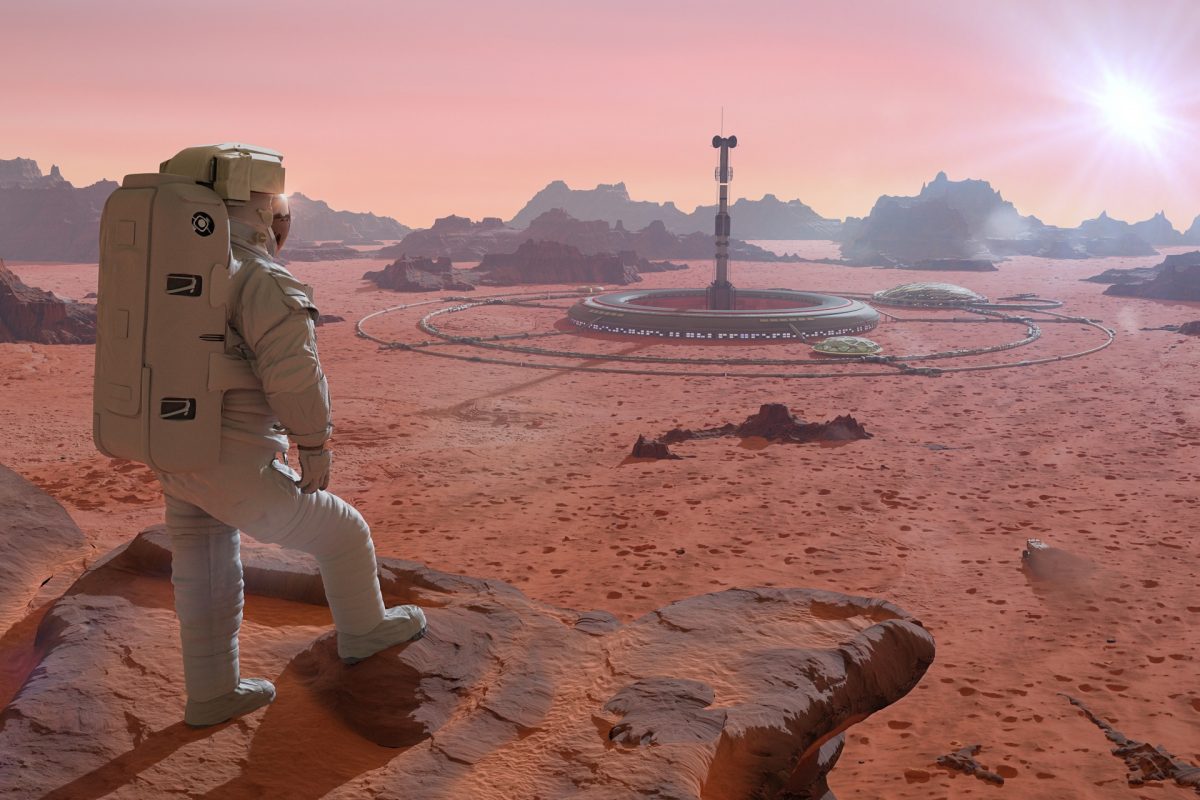The Dawn of Space Exploration Tech Enhances Tourism Industry

For decades, space exploration was the exclusive domain of a few government agencies, driven by national rivalries and monumental budgets. Today, the landscape has fundamentally changed. We are in a new era of space exploration, one marked by unprecedented acceleration, innovation, and global collaboration. This isn’t just a continuation of the old space race; it’s a new dawn, driven by a powerful mix of technological breakthroughs, the rise of private companies, and a renewed human desire to venture beyond our planet. This article will delve into the key drivers of this acceleration, exploring the pivotal role of commercial spaceflight, the ambitious new missions to the Moon and Mars, the future of space tourism, and the ethical considerations that will shape humanity’s expansion into the cosmos.
Commercial Spaceflight

The single biggest factor behind the acceleration of space exploration is the emergence of a vibrant commercial sector. Companies like SpaceX, Blue Origin, and Rocket Lab have fundamentally disrupted the old model, making access to space more affordable, frequent, and reliable than ever before. This shift from government-led missions to private enterprise has created a powerful feedback loop of innovation and competition.
A. Lowering the Cost of Access
Historically, launching a rocket was an astronomically expensive endeavor, with each launch vehicle being a one-time-use asset. The innovation of reusable rockets, pioneered by SpaceX’s Falcon 9, has dramatically reduced costs. By successfully landing and reusing the first stage of a rocket, the cost per kilogram to orbit has plummeted, making space accessible to a wider range of clients, from small startups to universities. This is a game-changer, as it allows for more frequent launches and a faster pace of scientific and technological development.
B. Rapid Innovation Cycles
Private companies operate under different incentives than government agencies. Their focus on efficiency and profit drives a faster pace of research and development. This has led to rapid advancements in rocket technology, satellite design, and launch operations. The pressure to innovate to stay competitive means that new technologies and capabilities are being introduced at a pace unheard of in the past. This agility allows the industry to adapt quickly to new challenges and opportunities, accelerating the overall progress of space exploration.
C. Diversification of Services
The commercial sector is not just building rockets. It is creating an entire ecosystem of space services. Companies are offering everything from satellite deployment and in-orbit servicing to lunar landers and habitat design. This diversification is creating a robust and resilient space economy, providing governments and other clients with a wider array of options and fostering a more dynamic environment for innovation. This is a critical step in turning space from a government-run frontier into a new domain for commerce and scientific discovery.
The New Destinations
After a long hiatus, the Moon is once again a primary destination, serving as a stepping stone for future human missions to Mars. This renewed focus is driven by both scientific curiosity and the strategic goal of establishing a sustainable human presence beyond Earth.
A. The Artemis Program
NASA’s Artemis program is a multi-national effort aimed at returning humans to the lunar surface. But unlike the Apollo missions, the goal of Artemis is not just to plant a flag and come back. The objective is to establish a long-term, sustainable presence on and around the Moon. This includes:
- Lunar Gateway: A small space station that will orbit the Moon, serving as a hub for missions to the lunar surface and a waystation for future deep-space travel.
- Artemis Base Camp: A permanent human habitat on the lunar surface, likely near the Moon’s South Pole, where water ice is believed to exist.
- Scientific Research: The Moon offers a unique environment for scientific research, from studying the solar system’s history to using the lunar surface as a platform for astronomical observations without the interference of Earth’s atmosphere.
The Moon is viewed as a proving ground, a place to test the technologies and systems needed for a much longer and more challenging journey to Mars.
B. The Red Planet Beckons
Mars remains the ultimate prize for deep-space exploration. The journey is incredibly difficult, and the environment is hostile, but the potential for scientific discovery and the chance to answer the fundamental question of whether life ever existed beyond Earth are powerful motivators.
- Robotic Precursors: Missions like NASA’s Perseverance rover and the Ingenuity helicopter are paving the way, collecting crucial data about Mars’s geology and atmosphere, and testing technologies for future human missions.
- The Starship System: SpaceX’s Starship is being designed with the explicit goal of carrying large numbers of people and cargo to Mars, making the dream of a multi-planetary species a tangible goal.
- International Collaboration: The complexity and cost of a human mission to Mars make it a global endeavor. International partnerships are being formed to share the immense risks and rewards.
Space Tourism and the Space Economy

The acceleration of space exploration is not just about scientific missions. It is also creating new commercial opportunities that were once unthinkable.
A. The Rise of Space Tourism
Space tourism, once a futuristic concept, is now a burgeoning industry. Companies like Virgin Galactic, Blue Origin, and SpaceX are offering sub-orbital and orbital flights to paying customers.
- Sub-orbital Flights: These “joy rides” to the edge of space allow passengers to experience a few minutes of weightlessness and see the curvature of the Earth.
- Orbital Flights: More complex and expensive, these missions take tourists into orbit for a multi-day experience, a journey once reserved for professional astronauts.
While currently a luxury for the ultra-wealthy, the hope is that as technology matures and costs come down, space tourism will become more accessible to a wider segment of the population.
B. The Growth of the Space Economy
The space economy is expanding beyond tourism and launches. New ventures are focused on:
- In-space Manufacturing: Companies are developing ways to manufacture products in the unique environment of microgravity, which could lead to new materials and pharmaceuticals.
- Asteroid Mining: The long-term vision of mining asteroids for valuable minerals and water is gaining traction, though it is still in the early stages of research and development.
- Satellite Constellations: Mega-constellations of thousands of satellites, like SpaceX’s Starlink, are providing global internet access and a new frontier for communication.
The Ethical and Societal Challenges
As humanity ventures further into space, we must confront a host of new ethical and societal questions.
A. Planetary Protection
As we explore new celestial bodies, we must ensure we don’t contaminate them with Earth microbes or, conversely, bring back any extraterrestrial life that could be harmful to Earth. This requires:
- Strict Sterilization Protocols: All spacecraft and equipment must be rigorously sterilized to prevent the transfer of biological material.
- Quarantine Measures: Any samples brought back to Earth from other planets must be handled with extreme care and quarantined until they are deemed safe.
B. The Space Arms Race
The increasing military interest in space, from satellite surveillance to anti-satellite weapons, raises the specter of a new arms race. This poses a threat to the peaceful use of space and could lead to a proliferation of dangerous debris in orbit.
- International Treaties: New international agreements and treaties are needed to ensure that space remains a peaceful domain for all nations.
- Debris Mitigation: The sheer number of satellites being launched necessitates new policies and technologies to mitigate the risk of space debris.
C. The Regulation of a New Frontier
The laws governing space are still based on treaties from the 1960s, a time when only a handful of government agencies were involved. New regulations are urgently needed to address a commercialized, multi-actor space environment, including issues of property rights, resource ownership, and the legal status of space colonies
Conclusion
The new era of space exploration is a testament to human ambition and ingenuity. It is a story not of a single event, but of a fundamental and rapid transformation driven by a convergence of technological, economic, and social forces. The rise of private commercial entities has fundamentally broken the old model, turning space access from a prohibitively expensive government-exclusive domain into a commercially viable and competitive market. This has been a catalyst for a virtuous cycle of innovation, making launches more frequent and affordable through groundbreaking reusable rocket technology. This newfound efficiency is not just a commercial success story; it is directly fueling humanity’s most ambitious scientific and exploratory endeavors.
The Moon is no longer a historical landmark but a strategic proving ground for our journey to Mars. The Artemis program, with its goal of a sustainable lunar presence, is not just about returning to the Moon, but about building the infrastructure and developing the technologies necessary to become a multi-planetary species. Mars, the ultimate destination, is no longer a distant dream but a tangible goal, with robotic missions paving the way and groundbreaking systems like Starship making the journey conceivable. Furthermore, this acceleration has unlocked a new dimension of human enterprise: the space economy. From space tourism, which is no longer science fiction, to in-space manufacturing and asteroid mining, the economic frontier of space is rapidly expanding, creating new industries and opportunities.
However, as we push the boundaries of human presence in the cosmos, we must do so with a profound sense of responsibility. We must confront the ethical and societal challenges that come with this expansion. The need for robust planetary protection protocols is paramount to prevent the contamination of other worlds and to safeguard our own. The growing military interest in space necessitates new international agreements to prevent a destabilizing arms race. And the outdated legal framework of space requires urgent updates to address a commercialized frontier, including issues of property rights and the governance of future space settlements. The acceleration of space exploration is a journey of incredible promise and immense challenge, and its success will ultimately be measured not only by how far we go but by how responsibly and equitably we make that journey, ensuring that the new dawn of space exploration benefits all of humanity.












